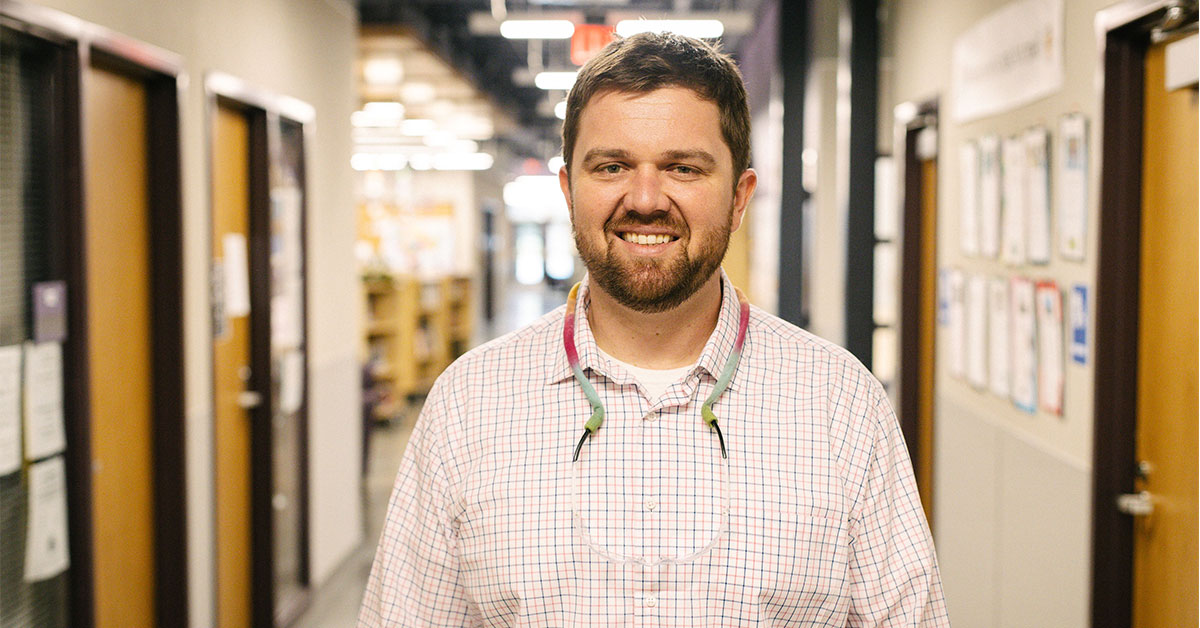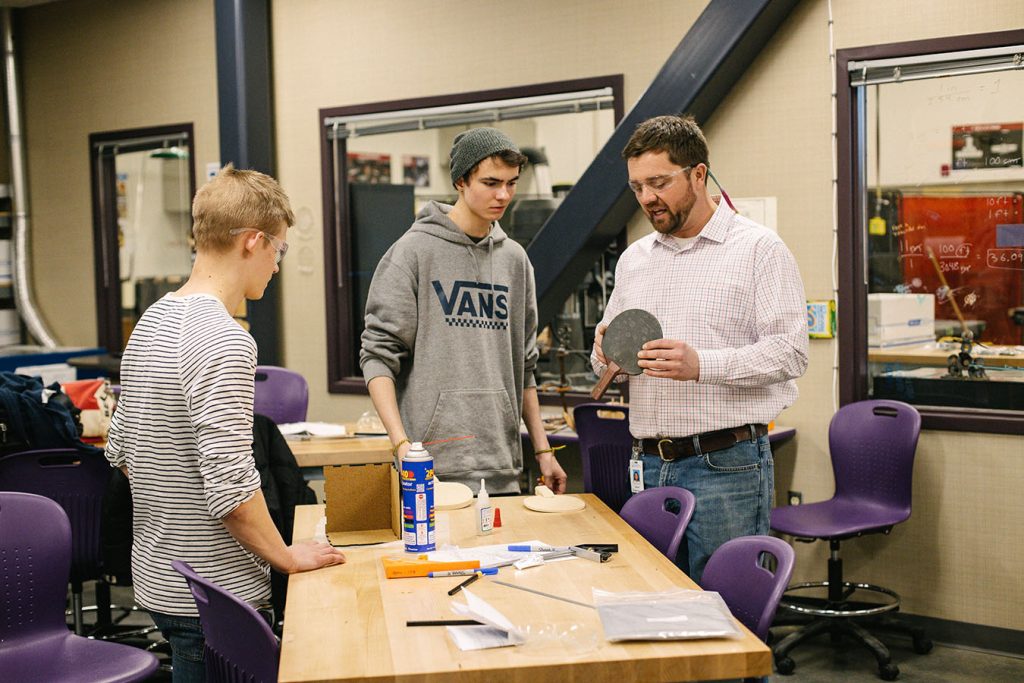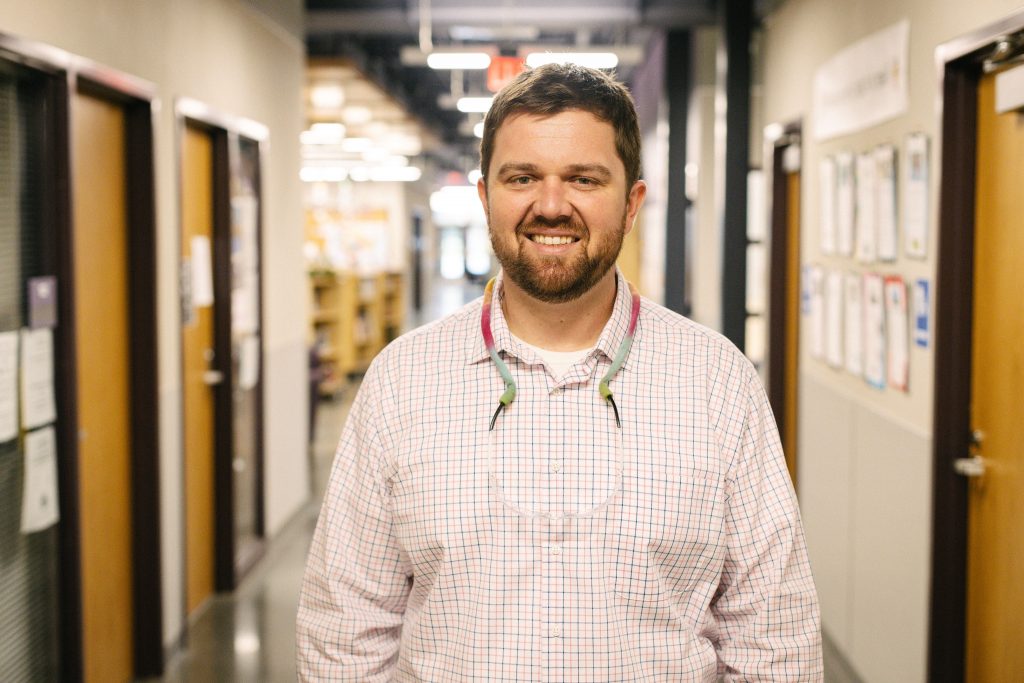
Meet Jared Greenwood, a career and technical education (CTE) teacher at Options High School in Bellingham, Wash.
Every day, students from the district’s three comprehensive high schools come to Options High School to engage in hands-on learning and develop real world skills through Jared’s Aerospace Manufacturing class, which is rooted in the Core Plus Aerospace curriculum. We had the opportunity to chat with Jared, meet some of his students, and ask a few questions about a typical day in his classroom. Take a look at what they had to say in this video and read on for more from Jared…
What classes do you teach and who are your students?
Students from all three of the high schools in the Bellingham School District can come and take classes at Options High School. The school acts as a central hub for students who want to learn aerospace manufacturing and get hands-on experience with the equipment and the tools they’ll see in the industry.
What do students learn in your class?
The first year of the Core Plus Aerospace curriculum consists of skills that students need to get into a specific manufacturing trade. The second year is specifically around aerospace manufacturing. Along the way students have opportunities to participate in internships with local businesses to get more real-world learning experiences.

What other skills do students learn along with manufacturing skills?
Students learn to be on time, how to be accountable to each other during group projects, and how to make sure they’re being efficient with their time.
What’s the class schedule for students like?
Students come here two to three times a week. We have an alternating double block schedule. At a minimum of twice a week, students are spending two hours and 40 minutes with me each day for a minimum of five hours a week.
What credits can your students earn?
The Bellingham School District allows students to earn multiple credits for each Aerospace Manufacturing class utilizing the Core Plus Aerospace curriculum. They can earn credits for CTE, third year math or science, or elective.
How have you seen your students grow?
I’ve seen my students grow in many different areas. It’s great to see students step out of their comfort zone and try a machine that they’ve never used before and try to build something. Students have also shown tremendous leadership growth and have competed in SkillsUSA competitions. Whatever a student puts into this class is what they’ll get out of it.
What other opportunities does the Core Plus Aerospace curriculum offer?
I’m a firm believer this course offers students multiple pathways after graduation. With the skills students learn they’ll be ready to go straight into industry or look at a two-year program or a four-year route if they want to purse an engineering or other degree. It’s a very well-rounded curriculum.
Why should students take Core Plus Aerospace? How can they get more information?
Students should take Core Plus Aerospace to explore and prepare for their future. Students can get their hands on a lot of different machines and try something new and dive deep into things that interest them. Students can find more information from their school counselors, teachers or usually a school will have an open house where students can see the equipment and the classroom.
What do you love about what you do?
Every day is different. Students work on different project every day and that keeps me on my toes. Students help me learn something new every day. We learn together.
Want more specifics? Check out the Aerospace Manufacturing course description from Bellingham’s 2019-20 course catalog:
Through hands-on engineering projects, students learn about aerodynamics, astronautics, space-life sciences, and systems engineering. This double-period course prepares individuals to apply basic engineering principles and technical skills to the identification and resolution of production problems in the aerospace industry. Includes instruction in machine operations, production line operations, engineering analysis, systems analysis, instrumentation, physical controls, automation, computer-aided manufacturing (CAM), manufacturing planning, quality control, and informational infrastructure. Students from any high school may take this course. See counselor for details.


